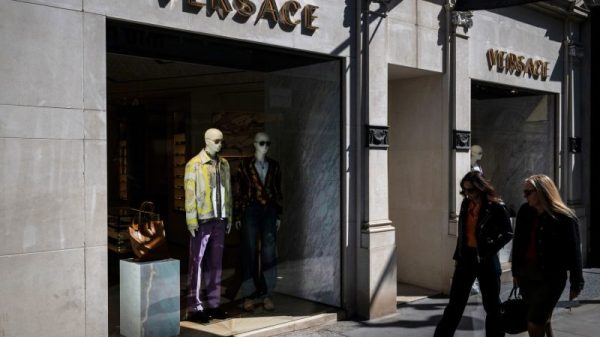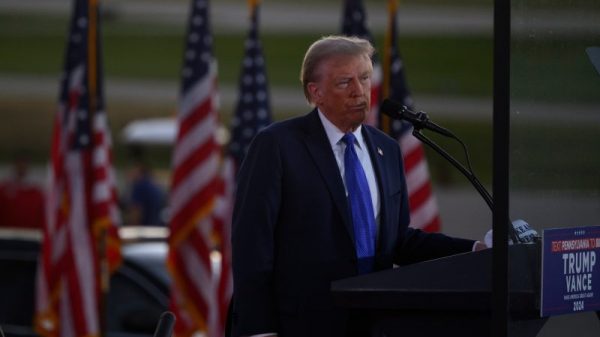The Bitcoin price has been steadily rising since the fourth quarter of 2023, fueled by the anticipation and eventual approval of spot Bitcoin exchange-traded funds (ETFs) in the US in January.
This uptrend continued in 2024’s first quarter, with March marking an unprecedented seventh consecutive month of price growth for Bitcoin. Q2 brought volatility for Bitcoin, but ultimately it hit an all-time high during the period.
Ethereum experienced a choppy descending pattern during the first half of Q2. However, sentiment shifted in mid-May on expectations that the US Securities and Exchange Commission (SEC) would approve spot Ether ETFs.
What other factors moved Bitcoin and Ethereum prices in the second quarter? Read on to find out.
April: Bitcoin price sinks post-halving
After hitting a new all-time high of over US$73,000 in March, Bitcoin largely trended down in April, dropping 15 percent over the course of the month to close at US$60,749 on April 30.
The Bitcoin halving occurred on April 20, and at the time, Fineqia research analyst Matteo Greco observed a noticeable shift in market dynamics compared to the lead-up to halvings in 2012, 2016 and 2020.
“Historically, Bitcoin halving events have been followed by 9-18 months of uptrend, but this time Bitcoin reached its all-time high before the halving,’ he wrote in a newsletter.
He pointed to profit taking, as well as slowing demand for Bitcoin ETFs, as potential reasons for the change in Bitcoin’s price activity this time around. Spot Bitcoin ETFs saw increasing outflows in April, with US$85 million recorded for the week ended April 12, followed by US$205 million in outflows the week after.
While volatility was low after the Bitcoin halving, the price continued its downward trend.
Ether, the second largest currency by market cap, saw a large price decline in Q2. It started at US$3,508 and ended at US$3,018, with its most dramatic decrease occurring between April 11 and April 13.
During that time it fell — along with the larger stock indexes — by 13.85 percent as conflict escalated in the Middle East. On April 17, Ether dipped to US$2,982, sinking below US$3,000 for the first time since February.
After a very brief reprieve, Ether started May at US$2,976 following insider reports that the SEC would deny applications to offer spot Ethereum ETFs. While the grounds for denying the applications were unclear at the time, some analysts speculated that the SEC required additional data to ensure regulatory compliance and investor protection.
May: Ether ETFs make progress with SEC
After starting May at a 60 day low of US$56,803, the price of Bitcoin began to recover. The cryptocurrency gained roughly 10 percent in the first week of the month to reach US$65,138 on May 6.
Ibrahim Ajibade, a research analyst for FX Empire, suggested that the movement of 4,550 Bitcoin from exchanges to more secure ‘cold storage’ locations, such as hardware wallets or offline computers, might have contributed to Bitcoin’s rise. It also came on the heels of April’s US non-farm payrolls report, which pointed to reduced inflationary pressure.
Supply is decreased when Bitcoin is moved into cold storage, and can impact the cryptocurrency’s value. Moving Bitcoin into cold storage can also indicate the intent to hold Bitcoin for the long term, signaling a positive outlook to investors. Ajibade predicted that Bitcoin would continue to rise in May, possibly reaching US$70,000.
His analysis proved to be accurate, and Bitcoin peaked at US$71,430 on May 20 before settling into the US$67,000 to US$69,000 range for the remainder of the month.
The SEC’s apparent shift in regulatory stance regarding Ether ETFs may have contributed.
After the SEC postponed its decision on the Invesco Galaxy Ethereum ETF for the second time on May 6, experts, including Bloomberg ETF analyst Eric Balchunas, drastically reduced their expectations for spot Ether ETF approval in the US. The prices of both Bitcoin and Ethereum experienced volatility over the next two weeks.
However, in a surprising turn of events, the SEC requested that the Nasdaq, CBOE and NYSE provide updated 19b-4 filings on an accelerated basis, signaling a potentially positive outcome for the ETF applications. The move prompted Blachunas and fellow ETF research analyst James Seyffart to increase their odds of approval from 25 percent to 75 percent; it also sparked a 20 percent rally in Ether’s price that carried through the remainder of the month.
Bitcoin also saw a price uptick, rising from US$66,865 to US$71,262 in a matter of hours on May 20.
The passing of the Financial Innovation and Technology for the 21st Century Act (FIT21) in the House of Representatives on May 22 further aided positive market sentiment. Investors interpreted the bill’s progress as a strong step toward legitimizing and regulating digital assets, and as a sign of growing acceptance of cryptocurrencies among lawmakers.
On May 23, the SEC approved all eight proposed applications to offer Ether ETFs: the VanEck Ethereum Trust, the Grayscale Ethereum Trust, the Bitwise Ethereum ETF, the iShares Ethereum Trust, the ARK 21Shares Ethereum ETF, the Invesco Galaxy Ethereum ETF, the Fidelity Ethereum Fund and the Franklin Ethereum ETF.
Predictably, talk almost immediately turned to the possibility of altcoin ETFs. Solana, the fifth biggest cryptocurrency by market cap at US$84 billion, is seen as a prime candidate, although experts believe approval may not happen quickly.
Nevertheless, the Solana blockchain remains a prominent player in the cryptocurrency space, as highlighted by PayPal’s (NASDAQ:PYPL) decision to launch its PYUSD stablecoin on Solana on May 29. This development underscored Solana’s potential for growth and its ability to attract significant partners.
June: Bitcoin and Ether prices face volatillity
Price volatility continued for both Bitcoin and Ether in June; both peaked early in the month before moving lower. Bitcoin started June at US$67,594 and achieved its highest monthly valuation of US$71,713 on June 5, while Ether was priced at US$3,785 on June 1 and hit its highest price of US$3,874 on June 5 as well.
Market sentiment was influenced by rising regulatory uncertainty, particularly as cryptocurrencies became a key point of discussion ahead of the US election.
After becoming the first candidate to accept political donations in cryptocurrencies in May, former US President Donald Trump advocated for all the remaining Bitcoin to be mined in the US in a June 11 post on his social media platform Truth Social. Prices for both Ether and Bitcoin increased after his comments.
The success of the crypto-focused super PAC Fairshake demonstrates the crypto industry’s significance in the election. During the congressional primaries in June, 33 out of 35 candidates backed by Fairshake won their races. Congressman Matt Gaetz (R-Fla.), has even introduced a bill to allow US taxpayers to pay federal taxes in Bitcoin.
On June 28, the US Department of the Treasury and the Internal Revenue Service released final regulations regarding digital asset transactions occurring on or after January 1, 2024.
The new rules state that US dollars and convertible foreign currency, whether in physical or digital form, will be treated as cash and not as stablecoins or other digital assets.
“The implementation of information reporting for digital assets is a massive step forward in reducing the tax compliance burden on individuals operating in this ecosystem. It is also a key step in closing the estimated $50 billion crypto tax gap and will further legitimize digital assets in the US. The final regulations provide businesses with needed clarity about their reporting obligations while also creating transparency for both taxpayers and the IRS when it comes to tax filing and compliance. “With these regulations in place, we are not just providing rules or closing a tax gap; we are offering a critical layer of stability and legitimacy to the crypto community. This stability will likely empower new market entrants, leading to further innovation within the space.”
Despite these regulatory movements, June saw the crypto markets pull back across the board.
Several events put selling pressure on Bitcoin. CoinShares’ Digital Asset Fund Flows report for the week ended on June 12 identified “a more hawkish-than-expected Federal Open Market Committee meeting” as a potential trigger for a US$600 million selloff of digital assets, led by Bitcoin. The outflows were the largest since March 22.
Reports of the German government liquidating millions of dollars in Bitcoin, coupled with a tech selloff, contributed to a Bitcoin price drop on June 20, as the crypto market faced increasing pressure from these concurrent events.
On June 24, Mt. Gox, a failed cryptocurrency exchange, announced it would begin repaying its creditors in July. The month also brought the news that Bitcoin miners, which are still adjusting to a reduced hash rate following the halving, sold over US$2 billion worth of Bitcoin in June, prompting the fastest selloff in over 14 years.
Bitcoin briefly dropped below the US$60,000 mark in the turmoil, but recovered on June 25, finishing the month at US$63,579. Ethereum, fueled by the imminent approval of spot Ether ETFs in the US, also felt some relief as the month drew to a close, climbing to US$3,512 on June 30. Spot Ether ETFs were ultimately approved on July 23.
Investor takeaway
During the second quarter of this year, the cryptocurrency market, particularly Bitcoin and Ethereum, experienced a sequence of notable events. Bitcoin saw volatility and a price decline after the halving, while Ethereum’s valuation was influenced both by the likelihood of ETF approval and regulatory developments.
The attention surrounding the presidential election in the US and other market dynamics have contributed to the overall volatility seen in cryptocurrency prices. The interplay of factors such as the halving, ETF approval prospects and geopolitical events has shaped all market performances, with crypto being no exception.
Moving forward, it will be crucial to monitor regulatory decisions, market sentiment and macroeconomic indicators to gauge the future trajectory of cryptocurrencies. Despite the challenges and corrections witnessed in Q2, the outlook remains optimistic, as evidenced by the resilience and recovery displayed by both Bitcoin and Ethereum.
Securities Disclosure: I, Meagen Seatter, hold no direct investment interest in any company mentioned in this article.






































